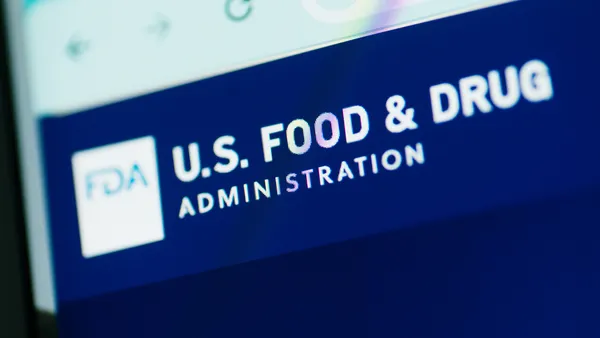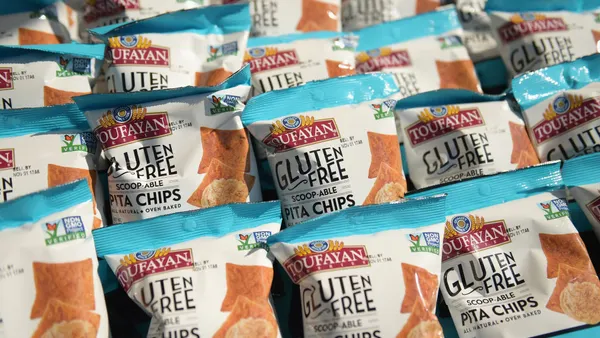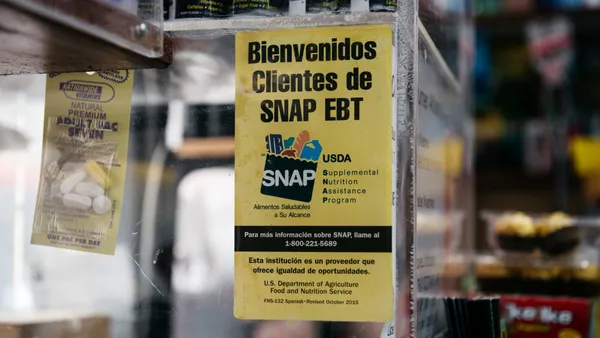Dive Brief:
-
The Environmental Working Group published its annual "Shoppers Guide to Pesticides in Produce," which includes both the "Dirty Dozen" and the "Clean Fifteen" lists of produce rated by their respective levels of pesticide residues.
-
The "Dirty Dozen" list was again topped by strawberries, followed by spinach, nectarines, apples, grapes, peaches, cherries, pears, tomatoes, celery, potatoes and sweet bell peppers. The "Clean Fifteen" list includes — in order — avocados, sweet corn, pineapples, cabbages, onions, frozen sweet peas, papayas, asparagus, mangoes, eggplants, honeydew melons, kiwis, cantaloupe, cauliflower and broccoli.
-
The EWG guide is based on the U.S. Department of Agriculture's annual Pesticide Data Program report. The USDA report noted more than 99% of more than 38,800 tested produce samples had residues "well below the [U.S. Environmental Protection Agency's] established tolerances" in 2016. In addition, USDA said results showed more than 23% of the tested samples had no detectable pesticide residue.
Dive Insight:
The EWG named the same produce items in its "Dirty Dozen" list this year as it did last year, although they were in a slightly different order. Strawberries were also the No. 1 "dirty" offender in 2017. Avocados took the top spot on the "Clean Fifteen" list this year, dethroning sweet corn, which headed the list last year.
The group says conventionally grown strawberries are typically dosed with dozens of pesticides before and after being planted. The USDA found an average of 7.8 different chemical substances per strawberry sample tested in 2015 and 2016, compared to 2.1 substances for all other produce. Some of the chemicals have been linked to cancer and reproductive damage or have been banned in other countries, the EWG said.
Pests really like strawberries, as do pathogens that live in the soil, which is why producers apply fumigants and other chemicals to their fields. Producers in California, where 80% of the U.S. crop is grown, are working to find substitutes, growing more organic berries and rotating strawberries with other crops. Despite the pesticide use, strawberries continue to be widely popular, with per-capita consumption reported at 4.85 pounds per year.
Besides strawberries, the EWG guide ranks the pesticide levels of 46 fruits and vegetables and has been updated annually since 2004. The group noted that the produce samples are thoroughly washed and sometimes peeled before testing, but that, even after these preparations, pesticide residues were still detected on many items.
Among the guide's findings:
- More than 98% of the samples of strawberries, peaches, potatoes, nectarines, cherries and apples tested positive for at least one pesticide residue.
- Not a single fruit sample from the "Clean Fifteen" tested positive for more than four pesticides.
- On average, spinach samples contained almost twice as much pesticide residue by weight compared to any other produce item tested.
- Less than 1% of samples of avocados and sweet corn showed any detectable pesticides.
- More than 80% of pineapples, papayas, asparagus, onions and cabbages had no pesticide residues.
Some produce groups call the EWG's guide misleading and counterproductive to efforts encouraging Americans to eat more fruits and vegetables. Jim Bair, president and CEO of the U.S. Apple Association, said in a statement that consuming more fresh produce is "one of the best things we can do for our health."
"Any report telling people not to eat fresh produce is beyond silly and potentially harmful advice," he said in a release.
However, the EWG believes that it's doing consumers a service by making the information more widely available so people can make their own decisions about the safety of their food.
"It is vitally important that everyone eats plenty of produce, but it is also wise to avoid dietary exposure to toxic pesticides," Sonya Lunder, a senior analyst for the EWG, said in a release. The group advises consumers to buy organic produce whenever it's available to avoid as many pesticide residues as possible.











